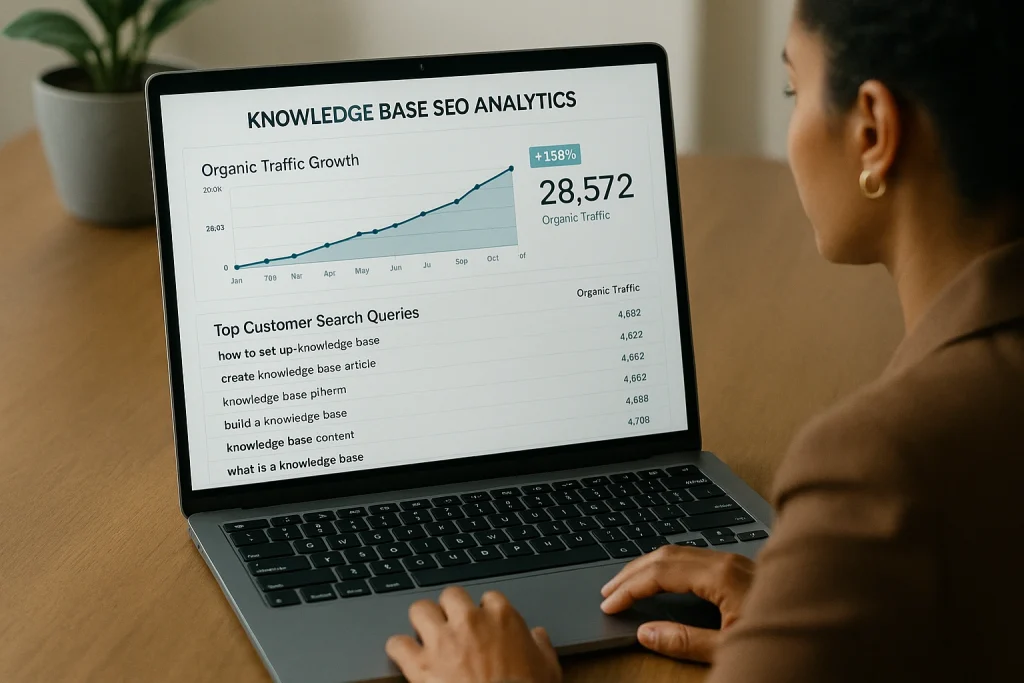Your spreadsheet tells a familiar story. Revenue is up, margins look solid on paper, and yet something feels fundamentally broken. You’ve pushed through another round of price increases, citing inflation and rising costs, only to watch order volumes stagnate or slip. Meanwhile, your sales team reports growing resistance from buyers who once accepted price hikes without question. Sound familiar?

Here’s the uncomfortable truth: Price increases were never going to be a permanent solution. They were a bandaid, a temporary fix to protect margins during extraordinary circumstances. But now, after several years of relentless pricing pressure, customers have reached their breaking point. They’re questioning every dollar, exploring alternatives, and in many cases, walking away from premium offerings that no longer feel worth the premium.
The companies thriving right now aren’t the ones still trying to squeeze another percentage point out of pricing. They’re the ones who recognized the warning signs early and fundamentally rethought how they deliver value. They understood that volume isn’t just a nice metric to track, it’s the heartbeat of sustainable growth. When volume flatlines, everything else eventually follows.
This isn’t about lowering prices or racing to the bottom. It’s about something far more strategic: realigning what you sell with what customers actually value today, not what they valued three years ago when market dynamics were completely different.
The Price Increase Trap Nobody Talks About
Let’s be honest about what happened over the past few years. Costs exploded. Supply chains buckled. Inflation hit numbers we hadn’t seen in decades. And naturally, businesses did what seemed logical: they raised prices. Once. Twice. Three times. Sometimes more. Each increase justified by external factors beyond anyone’s control.
But here’s what those spreadsheets didn’t show. While revenues climbed on the back of higher prices, something critical was eroding underneath: customer trust in your value proposition. Each price increase without a corresponding improvement in what you deliver chipped away at the perceived fairness of your offering.
Think about your own buying behavior. When your software vendor raised prices 15% last year, did you immediately see 15% more value? Probably not. You likely grumbled, evaluated alternatives, and filed that feeling away for the next renewal conversation. Your customers are doing the exact same thing.
Research from pricing experts shows that 53% of consumers now predominantly or exclusively choose lower-cost alternatives when faced with premium offerings that don’t clearly justify their price tags. In B2B, that trend manifests differently but just as powerfully. Buyers are extending RFP processes, demanding more proof points, and increasingly willing to take risks on newer, less expensive entrants who promise 80% of the value at 60% of the price.
The companies still pushing price as their primary growth lever are fighting yesterday’s battle. Markets have shifted. Customer psychology has changed. What worked in 2022 doesn’t work in 2025, and the gap between price and perceived value has become a chasm for many legacy premium offerings.
Three Market Responses That Should Worry Every CEO
The post-inflation pricing environment has triggered three distinct market responses, each more troubling than the last. Understanding these patterns isn’t academic; it’s critical to making smarter strategic decisions about where to compete and how to win.
- First, customers stretched their tolerance for price increases well beyond what any reasonable assessment of value would justify. Initially, buyers accepted that extraordinary circumstances required extraordinary adjustments. However, that goodwill wasn’t unlimited. Once customers realized that price increases had become routine rather than exceptional, their perception shifted from understanding to skepticism. Products and services priced at a premium suddenly felt overpriced, especially when the core offering hadn’t materially improved.
- Second, the search for alternatives accelerated dramatically. This wasn’t passive shopping around; it was active, deliberate substitution. Private label offerings in consumer markets surged. In B2B markets, buyers began taking serious meetings with vendors they would have dismissed out of hand just a few years ago. Foreign suppliers who were previously considered too risky suddenly looked appealingly cost-effective. New market entrants, unburdened by legacy cost structures, positioned themselves as smarter alternatives for price-conscious buyers.
- Third, and perhaps most damaging, a fundamental shift occurred in how customers evaluate value. The old value equation, where premium offerings commanded premium prices based largely on brand reputation and historical performance, broke down. Customers started demanding tangible, measurable proof of differentiation. Vague promises about quality, service, or innovation no longer justified significant price premiums unless those claims could be backed with concrete data showing real business impact.
Together, these three responses create a perfect storm for traditional premium players. Companies that built their business models around pricing power suddenly find themselves defending not just their margins but their relevance. The market has spoken: Value must be visible, tangible, and directly tied to price. Anything less opens the door for disruption.
Why Volume Matters More Than You Think
Volume growth isn’t just a vanity metric for sales leaders to obsess over during quarterly reviews. It’s actually one of the most powerful indicators of long-term business health. When volume stagnates while price climbs, you’re essentially admitting that you’re extracting more value from a shrinking base of customers. That’s not a growth strategy; it’s managed decline dressed up with better optics.
Think about what volume really represents. It’s customer votes. Each unit sold, each contract renewed, each expansion order represents a customer actively choosing your solution over alternatives. Healthy volume growth means you’re winning those votes consistently, expanding your footprint, and building the kind of market presence that becomes self-reinforcing. Stagnant volume, conversely, suggests that fewer customers are voting with their wallets, and the ones who remain are often staying out of switching costs rather than genuine enthusiasm.
The economics matter too. Fixed costs get distributed across volume. Operational efficiencies improve with scale. Negotiating leverage with suppliers strengthens. Innovation investments become more justifiable when you can amortize them across a growing customer base. Companies that maintain strong volume growth, even at lower unit margins, often outperform those that prioritize margin extraction from a declining base.
There’s also a competitive reality that too many executives overlook. Market share isn’t static. When your volume stagnates, someone else’s is growing. They’re building relationships with customers you once served. They’re learning, iterating, and improving their offerings based on feedback from an expanding base. Meanwhile, you’re optimizing around a smaller, aging customer cohort whose needs may no longer represent where the market is heading.
The psychology matters just as much as the math. Sales teams become demoralized when every conversation centers on defending price rather than solving problems. Customer success teams struggle to drive engagement when clients feel like they’re paying more for the same experience. Product teams lose touch with real market needs when their primary directive is cost reduction rather than value creation.
Volume growth forces you to stay sharp, stay relevant, and stay connected to what customers actually need. It’s uncomfortable, demanding, and requires constant adaptation. But that discomfort is exactly what prevents complacency and keeps organizations focused on value creation rather than value extraction.
Strategic Direction One: Increase the Value You Actually Deliver
If customers don’t see enough value to justify your price, the most obvious solution is to increase the value they receive. Simple in concept, brutally difficult in execution. Most companies already have innovation roadmaps, value-add initiatives, and product enhancements planned. The real question is whether those plans are ambitious enough, fast enough, and actually aligned with what customers value today.
Start by interrogating your innovation pipeline with uncomfortable honesty. Does your roadmap enable you to justify a price premium? If a prospect compared your offering to a lower-cost alternative, would the features you’re building create obvious, compelling differentiation? Or are you optimizing around internal priorities that don’t meaningfully move the needle for customers? Too many roadmaps are built around what’s technically feasible or strategically interesting to product teams rather than what creates tangible customer value.
Consider how emerging themes like sustainability and artificial intelligence create opportunities to deliver value in entirely new ways. These aren’t just technology buzzwords; they’re real business priorities for your customers. A specialized IT services company recently recognized that if they wanted to charge above-market rates, they needed to offer capabilities that justified those rates. Working with pricing experts, they identified specific services to include, skills to develop, and ways to package their expertise that aligned price and value tightly. The result wasn’t just better pricing; it was a fundamentally stronger offering.
Beyond core product innovation, substantial value often hides in the services surrounding your offering. When core products risk commoditization, additional value emerges through packaging, delivery excellence, and customer support that goes beyond basic fulfillment. A European textbooks publisher discovered this truth when research revealed customers perceived their products as overpriced relative to value delivered. Rather than lowering prices, they enhanced value creation by launching an online platform with tools and exercises that aligned with government priorities and modern teaching expectations. The digital enhancement justified pricing while addressing the fundamental perception gap.
However, the biggest value problem isn’t always the absence of value; it’s the failure to communicate value effectively. Sales teams trained to lead with price rather than demonstrating business impact leave money on the table even when strong differentiation exists. B2B Marketing teams that emphasize the wrong messages confuse rather than convince. Improving value selling requires equipping teams with tools, training, and frameworks to shift conversations from cost to outcomes.
Consider a software platform that saves customers 20 hours per week. If your sales team presents it as a $50,000 annual subscription, resistance is predictable. But if they frame it as recovering 1,000 hours annually (worth $50,000-$100,000 in fully-loaded labor costs), suddenly the value proposition becomes obvious. Same product, same price, completely different customer perception. That’s the power of effective value communication.
Strategic Direction Two: Debundle and Differentiate Smartly
Sometimes the problem isn’t that you’re not delivering enough value. The problem is that you’re forcing customers to buy more value than they need or can afford. Full-service offerings that made sense in stable, growth-oriented markets become barriers in price-sensitive environments. The solution isn’t indiscriminate price cutting; it’s strategic debundling that preserves your premium brand while expanding accessibility.
Debundling works when you can separate nice-to-have features from must-have core functionality. By stripping out less-used service layers, optional features, or premium SLAs, you create a lower entry price point without diluting brand positioning. The goal isn’t compromising core value but adapting packaging to different willingness-to-pay thresholds across your customer base.
A construction products manufacturer discovered this opportunity through market research. Their value delivery was excellent, but only appreciated by a small market segment willing to pay for the full package. Together with pricing consultants, they debundled their core product by removing elements customers didn’t value, simultaneously reducing costs and introducing a revenue model for those elements as optional add-ons. The result increased profitability through better COGS management while expanding market access through more flexible pricing.
This approach requires discipline. You must clearly define what stays in the core offering (preserving enough value to justify base pricing) and what becomes modular (creating upsell opportunities without alienating price-sensitive buyers). Poorly executed debundling feels like nickel-and-diming. Smartly executed debundling feels like customization and choice.
Alongside debundling existing offerings, another powerful strategy involves introducing dedicated lower-cost propositions tailored to price-sensitive segments or regions. Unlike stripped-down versions of premium products, these are often clean-sheet designs focused on essential needs. This enables market expansion without undermining flagship brands.
The key distinction: You’re not asking customers to accept less of the same thing. You’re offering something different designed specifically for their requirements and constraints. A technical wholesaler facing strong price pressure assigned distinct pricing roles to different portfolio segments. While keeping prices stable (or even decreasing them) on high-volume core products, they implemented small increases on long-tail items. The strategic segmentation delivered a 3-percentage-point profit increase without any volume loss because the approach recognized different customer sensitivities across the portfolio.
Care must be taken managing channel conflicts and preventing cannibalization of premium offerings. Clear market segmentation, distinct positioning, and deliberate separation of go-to-market approaches help maintain the integrity of both premium and value-oriented offerings. When executed well, this strategy combines volume recovery with brand protection, creating growth without compromise.
Strategic Direction Three: Smarter Margin Management
When customers resist price increases but profitability remains squeezed, the answer isn’t always new revenue. Sometimes it’s better management of existing margins through refined pricing logic, tightened discount practices, and reduced cost-to-serve. This direction requires surgical precision rather than broad strokes.
Start with a comprehensive pricing audit examining customer and product profitability at granular levels. Many companies discover they’re subsidizing unprofitable relationships or products without realizing it. A Dutch technical wholesaler experiencing strong price pressure conducted exactly this analysis with pricing specialists. The audit identified customers and products currently unprofitable that needed immediate attention. Additionally, they separated portfolio runners from long-tail products, maintaining stable pricing on high-volume items while strategically adjusting long-tail pricing. The differentiated approach improved overall profitability by 3 percentage points with zero volume loss.
This highlights a critical insight: Not all pricing changes need to be uniform. Sophisticated pricing strategies recognize that different products and customers have different price sensitivities, switching costs, and strategic importance. Treating everything the same leaves money on the table or unnecessarily risks volume loss.
Discount management represents another frequently overlooked margin opportunity. Most B2B companies have discount guidelines, but enforcement varies wildly across sales teams and regions. Tightening discount governance doesn’t mean eliminating flexibility; it means ensuring discounts align with strategic objectives like volume commitments, strategic account development, or competitive displacement rather than being default negotiation concessions.
Cross-selling and upselling strategies remain underutilized as margin and volume drivers. Expanding within existing customer accounts is typically more efficient than acquiring new ones. Beyond efficiency, strategic cross-sell and upsell can guide customers toward more profitable products while increasing account value and fostering loyalty. When customers see you as a partner helping them achieve better outcomes rather than just a vendor pushing additional products, their willingness to expand the relationship increases substantially.
Cost-to-serve optimization completes the margin management picture. Not all customers cost the same to serve, yet pricing often fails to reflect these differences. Customers requiring extensive support, frequent rush orders, or complex customization should contribute margins that justify the higher cost-to-serve. Conversely, low-touch, predictable customers might accept slightly lower prices in exchange for streamlined, self-service experiences that reduce your costs.
The beauty of margin management approaches is they improve profitability without requiring customers to accept higher prices or lower value. Instead, you’re optimizing the commercial engine to extract more value from existing relationships through smarter pricing architecture, tighter operational discipline, and more strategic resource allocation.
The Technology Reality Nobody Wants to Face
Here’s an uncomfortable truth that most executives dance around: Your pricing challenges aren’t just strategic; they’re also operational. Legacy systems, disconnected data, and manual processes make it nearly impossible to execute sophisticated pricing strategies even when leadership commits to them. Meanwhile, competitors leveraging modern pricing technology are running circles around you.
Research from BCG shows that sophisticated pricing may soon be impossible without AI and generative AI capabilities for in-depth analysis, recommendations, and communications. Yet few companies have fully integrated these tools into operating models in ways that generate actual value. Technology deployment without process redesign, cultural change, and skills development fails consistently.
Consider what modern pricing technology enables. Dynamic pricing that adjusts in real-time based on market conditions, competitor moves, and customer behavior. Contract-based pricing that automatically applies customized terms across thousands of individual agreements without manual intervention. Geographic pricing that reflects local market conditions, competition, and purchasing power across different regions. These aren’t theoretical capabilities; they’re operational realities at leading companies.
The gap between leaders and laggards is widening. According to industry data, 28% of B2B companies now prioritize customer willingness to pay over traditional cost-plus methods, leveraging advanced analytics to understand and optimize pricing at granular levels. Dynamic pricing strategies deliver margin improvements up to 10% by enabling real-time adjustments. Segmented pricing approaches through tiered and contract-based models create personalized experiences that boost both loyalty and average order value.
But technology alone isn’t the answer. The companies succeeding with pricing technology focus on three critical elements beyond the software itself. First, they redesign processes to leverage technology capabilities rather than automating broken workflows. Second, they invest heavily in developing organizational capabilities and change management so teams actually use the tools effectively. Third, they maintain focus on customer value and business objectives rather than letting technology complexity drive decision-making.
Pricing platforms must integrate seamlessly with existing ERP, CRM, and e-commerce systems. Data must flow freely across systems to enable the real-time insights and automated decisions that modern pricing requires. Many companies discover their technology limitations only after committing to strategic pricing changes, forcing expensive retrofitting or compromising on execution.
The takeaway isn’t that every company needs to immediately implement AI-powered pricing systems. It’s that pricing strategy and technological capability must be considered together. The most brilliant pricing strategy fails if your systems can’t execute it consistently across channels, geographies, and customer segments. Conversely, powerful technology sitting unused because processes and skills don’t support it wastes investment without delivering results.
Why Most Companies Get This Wrong
After working with hundreds of businesses on pricing strategy, patterns emerge around why so many companies struggle to shift from price-driven to volume-driven growth. Understanding these common pitfalls helps avoid repeating them.
- First, companies wait too long to act. Volume stagnation doesn’t happen overnight; it builds gradually as customer dissatisfaction accumulates. By the time leadership recognizes the problem as strategic rather than tactical, market position has already eroded. The companies that successfully reignite volume growth typically identify warning signs early—rising customer churn, lengthening sales cycles, increased competitive losses—and act proactively rather than reactively.
- Second, organizations treat pricing as a finance or sales problem rather than a cross-functional strategic imperative. Pricing touches product development, marketing, sales, customer success, operations, and finance. Sustainable pricing transformation requires alignment and collaboration across all these functions. When finance sets prices in isolation or sales negotiates without guardrails, the result is inconsistency, confusion, and suboptimal outcomes.
- Third, leadership underestimates the organizational change management required. Shifting from price-focused to value-focused conversations requires retraining sales teams, rewriting marketing messages, redesigning compensation structures, and often confronting uncomfortable truths about how value is actually created and communicated. Companies that treat this as a quick initiative rather than sustained transformation see early momentum fade when old habits reassert themselves.
- Fourth, many businesses lack the customer insight necessary to make informed decisions. They operate on assumptions about what customers value, what competitors offer, and where differentiation exists rather than grounded understanding based on research and data. When pricing decisions rest on flawed assumptions about customer willingness to pay or competitive positioning, outcomes disappoint regardless of strategic intent.
- Fifth, companies confuse activity with progress. Launching new packaging, updating pricing documentation, or conducting sales training feels productive but doesn’t necessarily move the needle on volume growth. Real progress comes from changing customer perceptions, winning competitive deals, and expanding market share. Everything else is just preparation for that real work.
- Finally, organizations fail to maintain focus and commitment through the inevitable challenges. Pricing transformation is messy. Early results often disappoint. Sales teams resist new approaches. Customers push back on changes. Leadership faces pressure to return to familiar tactics even when those tactics stopped working. The companies that successfully navigate pricing transformation maintain unwavering commitment to new approaches long enough to see results, learn from what doesn’t work, and iterate toward success.
What Winning Looks Like in 2025
The B2B companies reigniting volume growth right now share common characteristics worth studying. They’ve moved beyond viewing pricing as a lever to pull quarterly and instead treat it as a continuous capability requiring investment, attention, and refinement.
They start with obsessive customer focus. These companies constantly research what customers value, how willingness to pay varies across segments, and where competitive offerings create pressure. They don’t assume they know; they systematically gather evidence through surveys, interviews, conjoint analysis, and behavioral data. This customer insight drives everything from product roadmaps to pricing strategies to sales messaging.
They align pricing with value delivery in ways customers can clearly see and understand. Rather than generic claims about quality or service, they articulate specific business outcomes their solutions enable: Time saved, costs reduced, revenue increased, risks mitigated. They train sales teams to lead with these outcomes, structure proposals around value realization, and even tie pricing models to customer success metrics when possible.
They segment thoughtfully, recognizing that different customers have different needs, constraints, and willingness to pay. Rather than one-size-fits-all offerings and pricing, they create portfolios that serve different segments appropriately. This might mean premium offerings for customers who value comprehensive solutions, streamlined offerings for price-sensitive buyers, and everything in between. The key is that each segment receives an offering and price point that feels fair and compelling given their specific situation.
They embrace technology as an enabler of better pricing decisions and execution. Modern pricing platforms, CRM integrations, and analytics capabilities allow these companies to price dynamically, manage complexity efficiently, and continuously optimize based on performance data. However, they recognize that technology works only when supported by skilled people and well-designed processes.
They treat pricing as a competitive advantage rather than a necessary evil. Instead of reluctantly adjusting prices in response to market pressure, these companies proactively use pricing as a strategic tool to capture value, drive desired customer behaviors, and shape markets. They’re not afraid to experiment, test new models, and learn from both successes and failures.
They maintain discipline around margins while pursuing volume. Volume growth at the expense of profitability creates its own problems. The winners manage the balance carefully, pursuing volume in profitable segments, improving operational efficiency to serve that volume cost-effectively, and maintaining pricing integrity even while expanding market access.
Finally, they demonstrate patience and persistence. Reigniting volume growth after years of price-focused strategy doesn’t happen overnight. It requires sustained effort, consistent messaging, organizational alignment, and willingness to weather short-term challenges in pursuit of long-term health. These companies commit to the journey rather than expecting quick fixes.
Frequently Asked Questions
Watch for several warning signs that suggest pricing has become a volume barrier. Extended sales cycles where deals stall at pricing discussions, increasing customer churn despite strong product delivery, growing competitive losses particularly to lower-priced alternatives, and sales teams reporting consistent pushback on price all indicate misalignment between price and perceived value. Additionally, if revenue growth comes entirely from price increases while unit volumes remain flat or decline, that’s a clear signal your pricing strategy has reached its limits.
Strategic price reduction differs fundamentally from across-the-board cuts that signal desperation. The key is debundling offerings so customers can choose entry points that match their needs and budgets without forcing your premium brand to compete on price alone. Alternatively, introducing a separate value-tier offering under distinct positioning allows you to serve price-sensitive segments without diluting your flagship brand. The critical factors are clear segmentation, differentiated positioning, and ensuring your core premium offering maintains its value proposition for customers who need comprehensive solutions.
Begin with customer research to understand how your current pricing and value delivery align with willingness to pay across different segments. Many companies discover they’re delivering value customers don’t appreciate while under-investing in what actually matters. Armed with this insight, you can make informed decisions about where to enhance value, where to adjust packaging, and where pricing might need refinement. Simultaneously, audit your current margin structure to identify opportunities for profit improvement through smarter segmentation and discount management rather than blanket price increases.
Timeline varies significantly based on sales cycle length, contract structures, and the magnitude of changes implemented. For businesses with short sales cycles and transactional models, volume impacts might be visible within one or two quarters. For companies with annual contracts and long sales cycles, meaningful volume changes may take 12-18 months as contracts renew and market perception shifts. The important factor is maintaining consistent execution and resisting pressure to abandon strategy before it has time to work. Early indicators like increased pipeline activity, improved win rates, and expanding average deal sizes often precede measurable volume growth.
Sales team capability is absolutely critical to pricing transformation success. Even brilliant pricing strategy fails if sales teams default to leading with price rather than value or give away margin through unnecessary discounts. Effective training equips teams with value-selling frameworks, tools for quantifying business impact, and confidence to hold pricing discipline during negotiations. Beyond initial training, ongoing coaching, regular reinforcement, and compensation structures that reward profitable growth rather than just revenue all contribute to sustainable behavior change. Companies that skimp on sales enablement consistently underdeliver on pricing transformation goals.
Advanced analytics and AI offer significant advantages for companies managing complex pricing across numerous products, customers, and market conditions. They enable real-time optimization, pattern recognition across large datasets, and consistent application of pricing logic at scale. However, technology success depends on data quality, integration with existing systems, and organizational capability to act on insights generated. For smaller companies or those with simpler pricing structures, investing in foundational pricing capabilities like customer segmentation, value quantification, and process discipline often delivers better returns than rushing into advanced technology before the basics are solid.
The tension between volume and margin is real but not insurmountable. Smart companies pursue volume in segments where they can serve customers profitably, improve operational efficiency to reduce cost-to-serve, and maintain pricing discipline rather than chasing volume at any cost. Segmentation is key—different customer groups may have different margin profiles, and focusing volume efforts on segments where unit economics work creates growth without sacrificing profitability. Additionally, cross-sell and upsell opportunities within growing customer bases often improve overall account profitability even if entry-level pricing is more competitive.
The most common mistake is treating volume stagnation as primarily a sales execution problem rather than a strategic positioning problem. Companies blame sales teams for not closing enough deals or not selling value effectively when the real issue is that the price-value equation has fundamentally shifted in customers’ eyes. No amount of sales training or effort overcomes an offering that customers genuinely perceive as overpriced relative to value delivered. The solution requires honest assessment of whether your value proposition justifies your price positioning, not just better sales execution on a broken strategy.
Competitive dynamics significantly influence both pricing power and volume potential. When lower-cost competitors gain traction, particularly by delivering acceptable solutions at substantially lower price points, your premium positioning comes under pressure. However, racing to match competitor pricing rarely succeeds. Instead, focus on clear differentiation in areas customers value, effective communication of that differentiation, and serving segments where your unique value creates meaningful advantages. In some cases, this means accepting you won’t win every segment and focusing efforts where you can compete most effectively on value rather than price.
Beyond basic revenue and margin metrics, track volume trends across different customer segments, win rates versus specific competitors, sales cycle length, discount frequency and depth, customer acquisition cost, lifetime value, and churn rates by price tier. Additionally, monitor voice-of-customer data around value perception and price sensitivity. Leading indicators like pipeline quality, deal size trends, and expansion rates within existing accounts often signal strategy effectiveness before lagging metrics like revenue fully reflect changes. The key is establishing baseline measures before implementing changes and then tracking consistently to assess impact and guide refinements.
The Path Forward: Volume Growth as Strategic Imperative
The era of price-driven growth has run its course. Customers won’t accept endless increases without corresponding value improvements. Competition from lower-cost alternatives continues intensifying. Market dynamics favor companies that win on value rather than extraction. The question isn’t whether to shift strategy but how quickly and effectively you can execute that shift.
Reigniting volume growth requires more than tactical adjustments or incremental improvements. It demands fundamental rethinking of how you create value, package offerings, and align price with customer willingness to pay. Companies that embrace this reality and commit to genuine transformation will not only protect their market positions but also unlock new growth opportunities previously obscured by price-first thinking.
The good news is that the playbook exists. Increase value delivery through ambitious innovation and better communication. Debundle and differentiate to serve diverse customer needs without diluting your brand. Manage margins smarter through sophisticated pricing logic and operational excellence. Leverage technology to execute complex strategies consistently at scale. Most importantly, maintain customer focus and organizational discipline throughout the journey.
The companies that successfully navigate this transition won’t just recover lost volume. They’ll build more resilient, customer-centric business models better positioned for whatever market challenges emerge next. Price volatility, competitive disruption, and evolving customer expectations will continue. Organizations built around sustainable value creation weather these storms far better than those optimized around price extraction.
The time to act is now. Every quarter you delay moving from price-focused to volume-focused strategy, competitors gain ground, customers explore alternatives, and the eventual transition becomes more difficult. The discomfort of change pales compared to the consequences of defending an unsustainable position until market forces demand even more dramatic action.
Volume growth isn’t just a metric. It’s a signal that customers actively choose your solutions, that your value proposition resonates in the market, and that your business model can scale sustainably. When price increases stop working, the answer isn’t finding creative ways to squeeze more from existing customers. It’s building something customers genuinely want to buy at prices they believe are fair.
That’s how you reignite growth. That’s how you build lasting competitive advantage. That’s how you thrive rather than just survive in markets that have fundamentally changed. The companies that understand this truth and act decisively on it will own the next decade of B2B growth.





